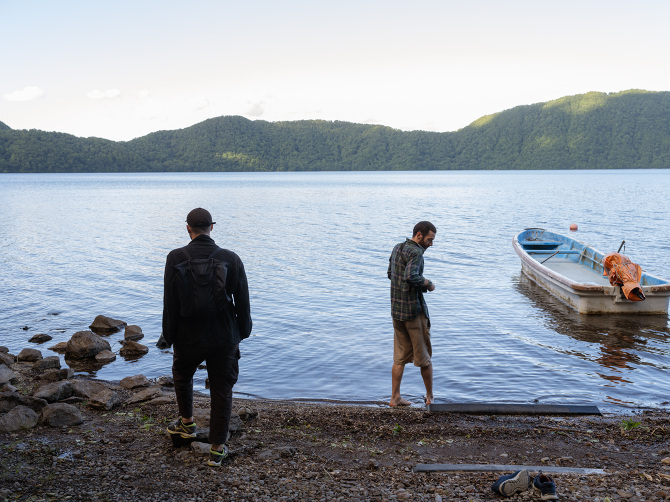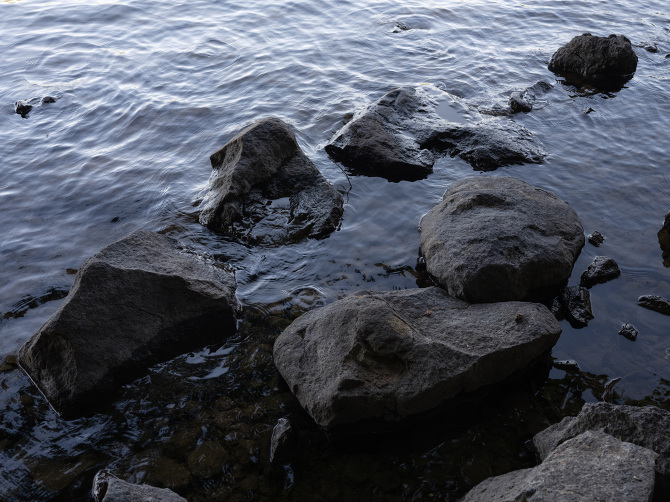【Emily’s Report No.04 エミリーのレポート】The Tenjinyama Dispatch IV: Ground By Resident Artist Emily Clements 滞在アーティスト エミリー・クレメンツ
Some writers stop reading when they write. I heard one writer explain that some styles are so strong that a process of creative osmosis is impossible to avoid. You read and what you read comes out in what you write. I have never really had a problem with this: I find other voices only strengthen my own. It means I can date my work, like a geologist studying the striations of the earth: ‘ah yes, here is where we really got into Murakami… and this is where the Garner kicks in’. At Tenjinyama, where artists converge across a variety of disciplines, I am finding that the influence is a thematic one. I am early enough in my career that I cannot really identify a central concern of my work. The way I would finish the sentence, ‘Emily Clements writes about…’, would depend on the time of day. So I am fascinated to meet artists who have spent more time immersed in their respective creative worlds, whose work has its own language; work that knows what it is, and what it is not.

Adam Thorman loves rocks. His work speaks a language of colour and texture that weaves through a layer of time deeper than culture, reaching toward the universal. He sees the human in the geological, and his eye is so strong I find it training my own. Even after his time at Tenjinyama draws to a close, I find myself scanning horizons for faces in the earth; the colours of clay demanding my reverent attention as much as brushstrokes on a gallery canvas. We hear from artists Irina Leifer, Chikako Watanabe and Cindy Moorman, whose project together has its own geological bent: New Town on the Old Ground. Together, their work names relations between the self, the planetary, and the sociohistorical. For a curator, Irina has a flexible definition of heritage. She defines it as something that is continually invented, reasserted, redefined. Art, in her view, can belong in a museum: it can speak to history as artefacts can, just with truth instead of facts.
We spend an evening introducing our work. Vincent Twardzik Ching inhabits marginal worlds: he tells us how he sought out spots in Tenjinyama park and waited for nature to speak to him. In his painting, you can feel the quiet he feels among the trees. Twardzik Ching Chor Leng disrupts the margins: her art displaces the organic/inorganic binary. Seeing the earth carved, fresh as a wound, in her work Real Estate (2014) stirs thoughts of possession, dispossession, and the harsh distance imposed between humanity and the environment upon which we depend. The space of collision resists categorisation.
I take the train and then the bus out to Lake Toya. I feel a little nervous about doing so: Adam told me that from the turn of the twentieth century, Mt Usu has erupted every 25 years or so. When I look out the bus window at the silver sheen of the water, I have a newsreel playing at the back of my mind: plumes of smoke, blocking out the sun; dogs, howling; rattling windows, and ribbons of hissing mud. I have come here precisely because of the eruption, however. The volcanic geopark maintained at Nishiyama is like nothing I have ever seen. In looking out over the marshland, it takes a moment to pick out the stripe of road disappearing into the water; a deer skips past the rotting hull of a car, half-submerged. There is a strange beauty in the manmade structures mashed together with graben formations. Nature meeting humanity in terrible, perfect artwork.
作家の中には、書き始めると読むのを止める人もいる。強いスタイルの文体は、制作途中の作家に影響を与えるという話を聞いたことがある。読んだものが、書くときに出てきてしまうのだ。
私はこの問題を経験したことがない。他人の意見は私自身の強みになることしかない。天神山には様々な分野のアーティストが集るが、その影響はテーマ的なものだと分った。私はまだキャリアが浅く、私自身の本質となるテーマというものを見出せていない。「エミリー・クレメンツは、、、について書いている」という文の締めくくりは、その日の時間帯によって変化する。だからこそ、それぞれの創作分野のアーティストと交流することに魅了されている。それぞれが独自の表現方法を持っていて、作品の本質が何であるか、また、何でないかを知っているからだ。
アダム・トーマンは岩が好きだ。彼の色彩とテクスチャーを使った作品は、時間の層を作り、普遍的なものへと到達する。彼は地質の中に人間を見いだす。その選択眼はとても鋭く、それによって私自身も鍛えられる。アダムが天神山を去った後も、私は地平線に地球の顔を捜していた。ギャラリーのキャンバスに描かれたブラシ跡と同じように、粘土の色に関心を持った。
イリーナ・ライファー、渡辺千賀子、シンディ・ムーアマンの3人のアーティストに話を聞いた: 「旧市街の新市街」という彼らの作品は、自己と惑星、そして社会歴史的なものとの関係を示している。イリーナはキュレーターとして、遺産を柔軟に定義している。それは、絶えず発明され、再認識され、再定義されるものということだ。彼女の考えでは、アートは美術館に属するものであり、人工物と同じように事実だけでなく真実の歴史を語ることができる。
私たちは一晩かけて作品を説明し合った。ヴィンセント・トワージック・チンは、不思議な世界に住んでいる。彼は、天神山公園でどのようにスポットを探し、自然が語りかけてくるのを待ったかを話してくれた。彼の絵からは、彼が木々の間で感じている静けさが伝わってくる。トワードツィク・チン・チョー・レンは境界を破壊する:彼女の芸術は有機と無機の二元論をずらす。彼女の作品『Real Estate』(2014年)で、傷のように瑞々しく刻まれた大地を見ていると、所有と占有、そして人類と環境の間に課せられた過酷な距離について考えさせられる。
電車とバスを乗り継いで、洞爺湖に行く。少し緊張。アダムは20世紀に入ってから、有珠山は25年おきに噴火するという。バスの車窓から銀色の水が見えたとき、頭の片隅でニュース映画が流れ始めた。煙があがり、火を遮る、犬がほえ、窓ガラスが揺れる、どろどろと流れる泥。私がここに来たのは、まさに噴火のためだった。西山の火山ジオパークは私が見てきた何とも違っていた。湿原から見ると、道路の線は水中に沈み、見つけるのに時間が掛かった。腐りかけた車の横を鹿がスキップしていた。潰された人工物とグラブ地形は不思議な美しさを作り出している。自然と人工が混在する、恐ろしくも完璧な美だった。
